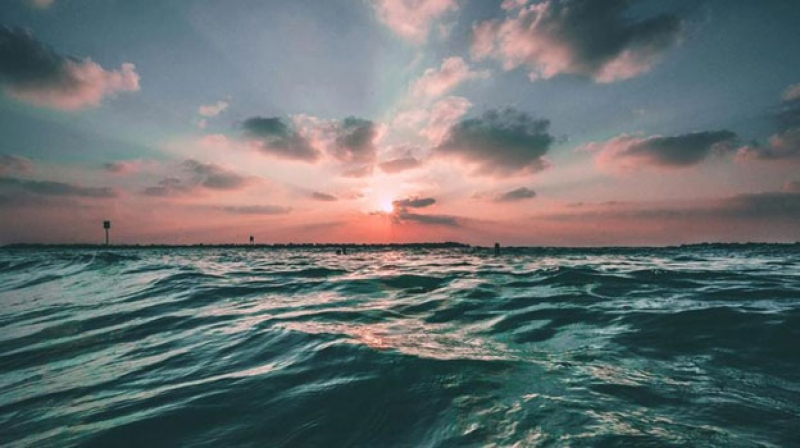- CA Yunus pays homage to Liberation War martyrs on Victory Day |
- Bangladesh capital market extends losing streak for second day |
- Bangladesh celebrates Victory Day Tuesday |
- 'Different govts presented history based on their own ideologies': JU VC |
UN Ocean Conference Must Inspire Global Ambition

Photo Credit: Joseph Barrientos on Unsplash
The United Nations Ocean Conference (UNOC) takes place every three years, and in just a few weeks, the international community will gather in Nice, France, at a time when the International Science Council has called for the world to address the new reality of a disrupted Earth system.
Research has found that global human health is intrinsically linked to the health of the ocean. But with the consequences predicted by science now beginning to confront us—such as the current global coral bleaching and mortality event being the most intense on record, sea surface temperatures continuing to skyrocket, and microplastics found in 60 percent of fish—it is now impossible to ignore that climate change and associated environmental stressors are impacting the ocean system and human well-being.
Despite this linkage, UN Sustainable Development Goal 14 (SDG 14), which is meant to support the conservation and sustainable use of ocean resources, remains the least funded of any SDG—receiving just 0.01 percent of all development funding.
UNOC is therefore a crucial moment for the world to come together and take bold action in support of sustainable ocean economies.
Three special events will be held in the days before the conference: the One Ocean Science Congress, which will gather the world’s leading ocean scientists to deliberate on the science we need for the ocean we want; the Blue Economy and Finance Forum, which will focus on transformative financing for ocean action; and the third, which will launch a coalition of cities and coastal communities to advance global and local responses to sea level rise.
Climate change has already led to a four-inch rise in sea level since satellite measurement began in 1993, and the UN has calculated that 900 million people living in low-lying coastal areas are going to be placed in acute danger.
All three special event subjects demand concerted international attention in these challenging times.
Thankfully, important work has already begun. In 2022, the world agreed that, in order to prevent a massive loss of biodiversity on this planet, we must set about protecting 30% of the planet by 2030 through the Kunming-Montreal Global Biodiversity Framework (GBF).
In pursuance of that goal, a 30×30 Ocean Action
Plan will be presented at UNOC to give attention to new funding models for
Marine Protected Areas (MPAs), with the opportunity to ratify the High Seas
Treaty enabling the establishment of protected areas in the High Seas.
It is hoped that, by the time the Nice conference is underway, the required
number of national ratifications of the High Seas Treaty will have been
received, thus allowing the treaty to come into force this year.
However, our management of the ocean must be as interconnected as the ocean itself. The 100% Alliance is a crucial opportunity, where countries commit to sustainably manage 100% of their national waters through evidence-based Sustainable Ocean Plans. By joining this initiative, countries can show their ambition and commitment to a more sustainably productive and prosperous ocean economy that benefits both people and nature.
The Alliance’s comprehensive management approach, coupled with the 30×30 goal, will ensure that new MPAs are not only established but are effectively managed and financed as part of an integrated ocean stewardship agenda.
Meanwhile, a commitment to science-based sustainable management of fish stocks must extend to the cessation of harmful fisheries subsidies. The latter are largely enjoyed by industrial fishing fleets, busy depleting the ocean of its declining resources.
At the WTO in Geneva, the necessary agreement to end harmful subsidies is very close to reality, with the salutary effect of the UN Ocean Conference likely to facilitate the desired WTO consensus.
The conference will work towards the curtailment of marine pollution and will, in tandem, be urging the attainment this year of a robust, internationally binding plastics treaty. In this task, we must not stumble, for agreement on the proposed treaty is a once-in-a-lifetime opportunity to control plastic production and pollution.
There is no doubt that control is required, for it is estimated that somewhere between one and three million tonnes of microplastics enter the ocean every year.
Scientific evidence is clear that these particles can absorb and accumulate toxic pollutants and that they can cross biological barriers, posing risks to the health of oceanic food webs. I emphasise the word health, for emerging evidence of the harm being done to humans by the unregulated chemicals present in many plastics is of growing concern to us all.
At the conclusion of the 10th Our Ocean Conference (OOC) in Busan, Korea, at the end of April, it was announced that the annual meetings have generated $160 billion over the past decade in voluntary commitments to improve the ocean. An important achievement in mobilising the necessary finance, but a much greater global ambition is required to address the urgent challenges.
As we prepare for the 3rd UN Ocean Conference, may we all dedicate ourselves to the true course set by multilateralism and the observance of international law. Without further delay, may we commit ourselves to a just transition to net zero, to an equitably electrified world powered by renewable energy.
Let us find hope in progress and allow reason and innovation to overcome the mounting challenges ahead. Let us take the tide while it serves, and through faithful implementation of SDG 14, may we bequeath a healthy ocean to our children and grandchildren.

